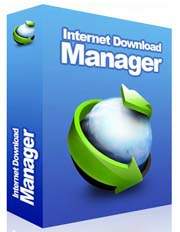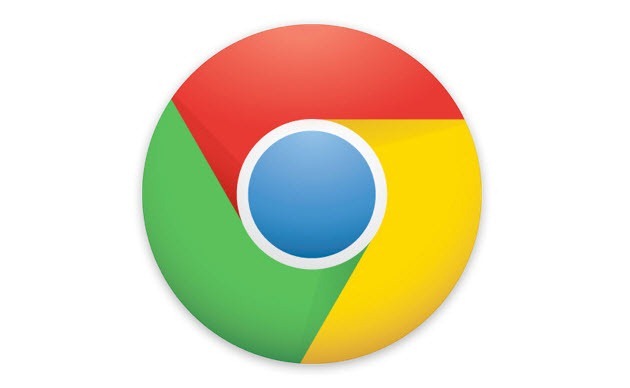The bottom line: Competitiveness, thy name is Chrome. Google's browser is one of the fastest and most standards-compliant browsers available. It lacks some of the fine-tuning you'll find in Firefox, but from the minimalist interface to support for future-Web tech like Native Client and HTML5, the browser is a must.
Review:
Google Chrome has matured from a lightweight and fast browsing alternative into an innovative, standard-bearing browser that people love. It's powerful enough to drive its own operating system,
Chrome OS. The browser that people can use today, Chrome 20, offers highly competitive features, including synchronization, autofill, and standards compliance, and maintains Google's reputation for building one of the fastest browsers available.
Chrome 20 represents a major milestone for the browser, but those expecting to see dramatic changes in major version-point updates will be disappointed. For a while now, Google has been pushing features over what it calls milestone numbers in a rapid-release cycle, which means that as soon as new features are usable in the beta version of Chrome, Google will likely push them to all users in the stable edition.
First Look: Chrome still shines, 10 versions later
Please note that there are at least four versions of Chrome available at the moment, and this review only addresses the "stable" branch, intended for general use. Chrome beta (
Windows (download) |
Mac (download)), Chrome dev (
Windows (download) |
Mac (download)), and Chrome Canary (
Windows (download) |
Mac (download)) are progressively less stable versions of the browser, and aimed at developers.
There's also
Chrome for Android and
Chrome for iOS.
Installation
Chrome's installation process is simple and straightforward. If you download the browser from Google's Web site, it will ask you if you'd like to anonymously submit usage statistics to the company. This can be toggled even after the browser is installed by going to the wrench-icon Preferences menu and choosing Options, then Under the Hood, and checking or unchecking Help Make Chrome Better. Depending on your processor, the installation process should take less than 2 minutes.
Interface
Google's Chrome interface has changed remarkably little since its surprise debut in September 2008. Tabs are still on top, the location bar (aka Omnibox) dominates the minimalist design, and the browser has few visible control buttons besides Back, Forward, and a combined Stop/Reload button. Although some users may not like having the tabs on top, we find it to be aesthetically preferable because it leaves more room below for the Web site we're looking at.
One change has been to remove the secondary Page Options button and combine it with the Preferences wrench icon to create space for extension icons to the right of the location bar. As it currently stands, it could be better organized. Some controls, such as page zoom, are readily available. Others, such as the extension manager, are hidden away under a Tools submenu.
Chrome's extensions are fairly limited in how they can alter the browser's interface. Unlike Firefox, which gives add-on makers a lot of leeway in changing the browser's look, Chrome mandates that extensions appear only as icons to the right of the location bar. The benefit is that this maintains a uniform look to the browser, but it definitely limits how much the browser can be customized. Chrome doesn't support sidebars, either, although other Chromium-based browsers (such as
Comodo Dragon) do offer the feature. There is an option in Chrome's about:flags, a series of experimental features, that lets you move the tabs to a sidebar.
Settings pages get their own tab, rather than a dialog box. If you sign in to more than one Google account, you'll see the profile icons in the upper left corner on the tab row.
Even with its limitations, the interface design has remained a contemporary exemplar of how to minimize a browser's screen footprint while keeping the browser easy to use and versatile.
Features and support
Chrome 20's features are accessible from the Preferences menu via the wrench icon on the right side of the navigation bar. It offers a complete range of modern browsing conveniences. The basics are well-represented, including tabbed browsing, new window creation, and a private browsing mode that Google calls Incognito, which disables cookie tracking, history recording, extension support, and other browsing breadcrumbs.
Chrome is based on WebKit, the same open-source engine that powers Apple Safari, Google's Android mobile platform, and several other desktop and mobile Web-browsing tools. However, Chrome runs on a different JavaScript engine than its WebKit cousins, and there are other changes as well.
Along with hardware-accelerated 3D CSS, there have been interesting security improvements. You can now delete Flash cookies from inside Chrome, which makes sense given that Chrome comes with Flash built in, and there's a new Safe Browsing protection against downloading malicious files. Chrome's Web app support now includes the ability to launch Web apps from the location bar. This gives keyboard jockeys a bit more power to avoid mousing around, more readily apparent in Chrome OS but nevertheless good to have in the regular old Chrome browser.
There's Native Client, too. Also known as NaCl, it's open-source technology that allows C and C++ code to be securely run in the browser. It basically lets software run within two protected sandboxes, which will theoretically cut down on browser-based threats dramatically. When completed, NaCl will enable Web apps to run as smoothly as programs that are hosted on your hard drive.
Besides allowing you to disable JavaScript, Chrome will automatically block Web sites that are known to promulgate phishing attacks and malware threats or be otherwise unsafe. The usefulness of this depends on Google's ability to flag Web sites as risky, though, and so it's recommended to use an add-on like the
Web of Trust extension or a separate security program to block threats.
Chrome also offers a lot of privacy-tweaking settings. In the Options menu, go to the Under the Hood tab. From here, you can toggle and customize most of the browser's privacy and security settings. Cookies, image management, JavaScript, plug-ins, pop-ups, location information, and notifications can be adjusted from the Content Settings button. This includes toggling specific plug-ins, such as the built-in Adobe Flash plug-in or the Chrome PDF reader (which is deactivated by default).
Chrome offers malware scanning on Web pages to include downloads, and the precaching tool for loading sites in your search results early now works with the Omnibox location bar.
Print preview, formerly a small but glaring hole in Chrome's feature list, is now present in the Windows and Linux versions. Chrome stable for Mac still doesn't have the feature, which is powered by the PDF reader that comes built into Chrome.
Chrome's tabs remain one of the best things about the browser. The tabs are detachable: "tabs" and "windows" become interchangeable here. Detached tabs can be dragged and dropped into the browser, and tabs can be rearranged at any time by clicking, holding, dragging, and releasing. Not only can tabs be isolated, but each tab exists in its own task process. This means that when one tab crashes, the other tabs do not. Though memory leaks are a major concern in Chrome when you have dozens of tabs open, we found sluggish behavior and other impediments weren't noticeable until after there were more than 30 tabs open. That's not an immutable number, though, and different computers' hardware will alter browser performance.
You can sync tabs and their browsing histories to other computers and devices such as Android and iOS in Chrome 20.
Some of the basics in Chrome are handled extremely intuitively. In-page searching works smoothly. Using the Ctrl-F hot key or the menu option, searching for a word or phrase will open a text entry box on the top right of the browser. Chrome searches as you type, indicating the number of positive results and highlighting them on the page.
Account syncing is another area where Chrome does well. Using your Gmail account, Chrome will sync your themes, preferences, autofill entries, passwords, extensions, and bookmarks. You can toggle each of those categories, too. Extension syncing has been the roughest of the lot.
Chrome has multiple user account support. This means that you can now have multiple people, or at least multiple Gmail accounts, running in Chrome simultaneously. However, it's not "people-secure," meaning that although your data might be secured on Google servers, once an account is logged in to Chrome, you don't have to re-enter your account data. Anybody with access to Chrome on your computer can see your stuff.
The intuitive New Tab page allows you to create custom categories by dragging and dropping apps and bookmarks, and includes navigation arrows on the left and right edges of the page that become more visible on mouse-over.
Like Firefox, Chrome gives broad control over search engines and search customizations. Though this doesn't sound like much, not all browsers allow you to set keyword shortcuts for searching, and some even restrict which search engine you can set as your default. Chrome comes with three defaults to choose from: Google, Bing, and Yahoo.
The Chrome extension manager, bookmark manager, and download manager all open in new tabs. They allow you to search their contents and throw in some basic management options like deletion, but in general they don't feel as robust as their counterparts in competing browsers. For example, URLs in the bookmark manager are only revealed when you mouse over a bookmark, and you must click on one to get the URL to permanently appear. That's an extra click that other browsers don't require.
Two other low-profile but well-executed features in Chrome are auto-updating and translation. Chrome automatically updates when a new version comes out. This makes it harder to revert back to an older version, but it's highly unlikely that you'll want to downgrade this build of Chrome since this is the stable build and not the beta or developer's version. The second feature, automatic translation of Web pages, is available to other browsers as a Google add-on, but because it comes from Google, it's baked directly into Chrome.
Chrome is also a leader in HTML5 implementation, which is uneven because of the continuing development of HTML5 standards. This will become more important in the coming months and years, but right now it doesn't greatly affect interactions with Web sites.
Performance
Based on the open-source WebKit engine and Google's V8 JavaScript engine, Google Chrome debuted to much fanfare because of its rocketing rendering speeds. More than three years down the line, that hasn't changed, and the stable version of Chrome remains one of the fastest stable browsers available. The less stable versions, with their more recent improvements and bug fixes, are often faster.
You can see
CNET's most recent benchmark tests that included Google Chrome; while that particular version of Chrome didn't do too well, the browser has seen a lot of changes since that test and you definitely should not discount it.
Note that to effectively use hardware acceleration, you must make sure that your graphics-card drivers are up-to-date. Nevertheless, Chrome remains one of the fastest browsers available, and its rapid version update rate ensures that it is consistently competitive. It finally has extended hardware accelerated graphics to older Windows and Macs courtesy improvements to WebGL support and changes to Canvas2D.
Conclusion
It's hard to tell which is faster, user adoption of Chrome or its development. Certainly the two are linked, and due in no small part to Google's ability to lay claim to the "fastest browser" title, even when it may not be strictly justified. The rest of Chrome's appeal lies in its clean, minimalist look, and competitive features that justify its still-increasing market share. Chrome is a serious option for anybody who wants a browser that gets out of the way of browsing the Web.
Publisher's Description

Google Chrome is a browser that combines a minimal design with sophisticated technology to make the Web faster, safer, and easier. Use one box for everything--type in the address bar and get suggestions for both search and Web pages. Thumbnails of your top sites let you access your favorite pages instantly with lightning speed from any new tab. Desktop shortcuts allow you to launch your favorite Web apps straight from your desktop.
Google Chrome is in the
Web Browsers category of the
Browsers section.
Download Now Here  Antivirus protection that automatically updates to protect you from continually evolving threats. As hackers develop new techniques, AVG's research labs are constantly processing web data to provide new defenses to keep you automatically protected. Get on with your surfing and gaming without interference. Scans operate when you are away from your PC, and it also knows when you are gaming and ensures that the security operates in the background only, leaving you free to play.
Antivirus protection that automatically updates to protect you from continually evolving threats. As hackers develop new techniques, AVG's research labs are constantly processing web data to provide new defenses to keep you automatically protected. Get on with your surfing and gaming without interference. Scans operate when you are away from your PC, and it also knows when you are gaming and ensures that the security operates in the background only, leaving you free to play. 







 Picasa can transfer, find, organize, edit, print, and share images, all with this easy-to-use product. Watch Picasa automatically organize all your pictures into elegant albums by date. Having all your photos in one place means no more time wasted searching for folders or files. The program works with JPEG, GIF, BMP, PSD, and movie files and is compatible with most digital cameras; it detects your USB driver and imports pictures into albums.
Picasa can transfer, find, organize, edit, print, and share images, all with this easy-to-use product. Watch Picasa automatically organize all your pictures into elegant albums by date. Having all your photos in one place means no more time wasted searching for folders or files. The program works with JPEG, GIF, BMP, PSD, and movie files and is compatible with most digital cameras; it detects your USB driver and imports pictures into albums. Flash Player 11 is a lightweight, highly expressive client runtime that delivers powerful and consistent user experiences across major operating systems, browsers, mobile phones, and devices. Adobe Flash Player software is a cross-platform browser plug-in that delivers breakthrough web experiences and is installed on more than 98% of Internet-connected desktops. Adobe Flash Player 11 explores a new architecture for high-performance 2D/3D GPU hardware accelerated graphics rendering by Adobe, which provides low-level Stage3D APIs for advanced rendering in apps and gives framework developers classes of interactive experiences. Flash Player is optimized for high performance on mobile screens and designed to take advantage of native device capabilities, enabling richer and more immersive user experiences.
Flash Player 11 is a lightweight, highly expressive client runtime that delivers powerful and consistent user experiences across major operating systems, browsers, mobile phones, and devices. Adobe Flash Player software is a cross-platform browser plug-in that delivers breakthrough web experiences and is installed on more than 98% of Internet-connected desktops. Adobe Flash Player 11 explores a new architecture for high-performance 2D/3D GPU hardware accelerated graphics rendering by Adobe, which provides low-level Stage3D APIs for advanced rendering in apps and gives framework developers classes of interactive experiences. Flash Player is optimized for high performance on mobile screens and designed to take advantage of native device capabilities, enabling richer and more immersive user experiences.


 Google Chrome is a browser that combines a minimal design with sophisticated technology to make the Web faster, safer, and easier. Use one box for everything--type in the address bar and get suggestions for both search and Web pages. Thumbnails of your top sites let you access your favorite pages instantly with lightning speed from any new tab. Desktop shortcuts allow you to launch your favorite Web apps straight from your desktop.
Google Chrome is a browser that combines a minimal design with sophisticated technology to make the Web faster, safer, and easier. Use one box for everything--type in the address bar and get suggestions for both search and Web pages. Thumbnails of your top sites let you access your favorite pages instantly with lightning speed from any new tab. Desktop shortcuts allow you to launch your favorite Web apps straight from your desktop.










